Requirements for installing a gas boiler in a private home: installation tips and rules for safe operation
Agree that you won’t be able to make your home safe by ignoring the requirements for installing a gas boiler in a private home. Isn't that right? The only problem is that it is difficult to understand the relevant documents, since the field is regulated by dozens of SNiPs and GOSTs.
But the problem can be solved and this article will help with this. Which tells you how to properly install the boiler, which will become the basis for its further safe operation.
The content of the article:
Regulatory framework governing the field
Improper use of gas equipment often leads to negative consequences. Therefore, the state regulated this area to the smallest detail.
And, due to this feature, one, even a voluminous document, will not be able to contain all the necessary information.

As a result, there are really a lot of all kinds of instructions. For example, certain related issues are regulated by:
- SP-401.1325800.2018, which sets out the design rules for all kinds of gas consumption systems in residential buildings;
- SP 62.13330.2011, where it is indicated what the gas pressure should be, how to correctly lay the pipes to the boiler, etc.;
- GOSTs with numbers R 52318-2005; R 58121.2-2018; 3262-75. Where it is indicated which pipes and connecting elements can and should be used when installing a gas boiler. In addition, steel and other types of gas pipelines are described. And also their characteristics are indicated;
- GOST 27751-2014; SP 20.13330. These documents set out the requirements for the load on external and internal gas pipelines used to install boilers;
- SP 402.1325800.2018, which sets out the rules for connecting boilers to electrical networks;
- SP 28.13330, and in some cases GOST 9.602-2016, which describes methods for combating corrosion;
- SNiP 21-01-97. This document outlines the safety measures that should be observed when operating buildings, including those heated by gas boilers. Building materials are also divided into flammable and non-combustible. And such information is important when equipping the room in which the boiler will be placed.
In addition, you should familiarize yourself with the rules set out in SP 60.13330.2016 (this document is an updated version of the well-known SNiP 41-01-2003). After all, it is precisely this by-law that states that individual heating sources can be used to heat housing and what they should be.
And this is not all you need to know to guarantee the correct placement of the boiler and further safe operation.
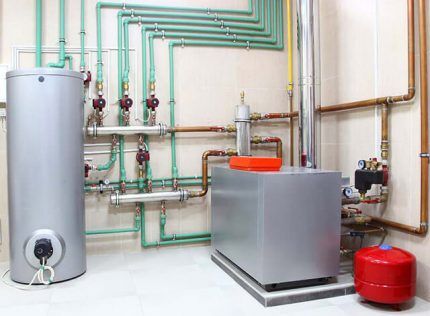
And, if, for example, the question arose about why you need to know safety measures or loads on pipes during construction. Then you should remember that the installed boiler will be allowed for operation. And, when the established rules set out in the profile document are not followed, the identified shortcomings will have to be eliminated.
In the case when a purchased gas boiler is being installed in your own wooden house and the requirements for the size of the foundation are not met, which at any point must exceed the dimensions of the boiler by at least 30 cm. Then, instead of enjoying comfort, you will have to dismantle the structure and perform new work.
How to install the boiler correctly?
It is worth starting work on installing a gas boiler not with boiler room equipment. And not even from determining the boiler model, but from finding out whether this is even possible to do.
Why should you contact Gorgaz (raygaz) in order to obtain technical specifications, and at the same time permission to carry out the design of a boiler house.
Appeals to Gorgaz must be made in writing. It is necessary to submit an application, which must be accompanied by:
- copies of documents confirming that the applicant is the owner of the building and adjacent land;
- situation plan of the allotment. This point is relevant only if the boiler room will be located in a separate building, which does not yet exist.
The applicant will also have to confirm his identity.
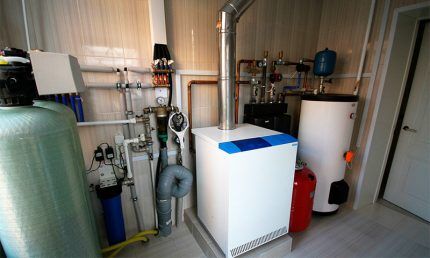
The submitted document should contain a request for technical conditions and indicate the planned gas consumption. If its exact value is not known, and the property owner himself does not have the necessary knowledge to perform the calculation, then this service can be negotiated with representatives of the city gas company. But for this you will have to submit a separate application.
Gas workers are required to issue technical specifications within the established 10 days. But the reality is that the timing depends on the workload of the specialists of a particular city gas company.
Equipment installation steps
Having received the technical conditions in hand, you can proceed to the implementation of the task of installing the boiler. The whole procedure consists of 4 stages.
These include: project creation, project approval, boiler installation, equipment testing. The listed stages cannot be ignored or swapped.
Stage No. 1 - installation design
Actually, this stage of installing a gas boiler is intended to determine the exact list of rules and regulations that will have to be followed.
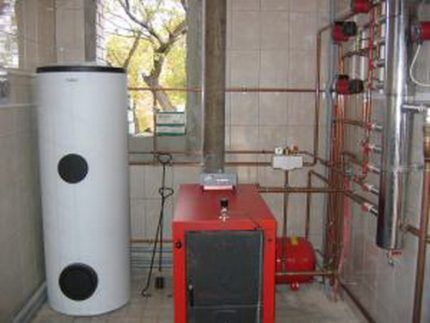
There are many of them, but it all comes down to ensuring that the heating system, of which the boiler will be part, can:
- ensure that all rooms of the building are heated to normal temperatures (for residential premises this figure is 18-24 °C), and throughout the entire heating period;
- heat all rooms evenly;
- provide hydraulic and thermal stability. In simple words, this means that the heating system as a whole, like the boiler itself, must be reliable and stable throughout its entire service life, regardless of operating modes.
The specified requirements are not general - these are specific and strict standards set out in SP 60.13330.2016, and they are fundamental.
To understand: if the boiler does not provide heating of the air to comfortable temperatures, then will the rule stating what the minimum size of an operating gas boiler room in a particular private house be important?
Therefore, the performance of a gas boiler must be determined taking into account:
- the area of the premises that the unit will heat;
- heat loss of the building;
- climatic conditions of the region.
Initially, you should pay attention to what you are prohibited from doing when installing the boiler.
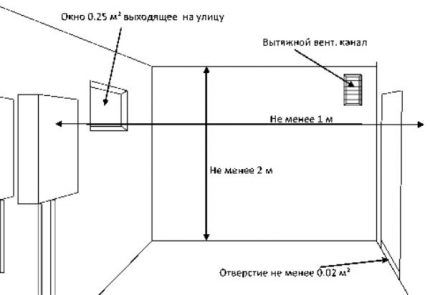
Namely, gas equipment cannot be placed on surfaces made of flammable materials. For example, on a wooden base. It is dangerous and therefore prohibited to install boilers on balconies, loggias, basements and other places where ventilation is difficult.
If you plan to use liquefied carbon gas, then placing the boiler on the ground floor is prohibited. Premises used for recreation are the most unsuitable premises for placing heating equipment. In addition, doors from the boiler room should not open into recreation areas - this should also be taken into account when designing.
The room in which the boiler is installed must meet a number of requirements, namely:
- the area should not be less than 4 m²;
- The minimum room volume is 7.5 m³. Moreover, this standard is relevant only for boilers whose power is no more than 30 kW.If the specified characteristics of the units are higher, then the minimum volume of the boiler room should be 13.5 m³. And with a power of 60 kW - 15 m³;
- the height of the room must be at least 2.2 m with a boiler power of up to 30 kW. If the productivity exceeds the specified value, then the minimum height will be 2.5 m;
- the room must be equipped with a door with an opening of 0.8 m.
When equipping a boiler room, special attention should be paid to windows. Which should provide the room with a sufficient level of lighting to perform the necessary operations to control the boiler, and also serve for ventilation of the rooms. The last point is critical.
Therefore, the main requirement is that boiler rooms must be equipped with windows. In this case, the glazing area should be 0.03 m² for every 1 m³ of room volume.
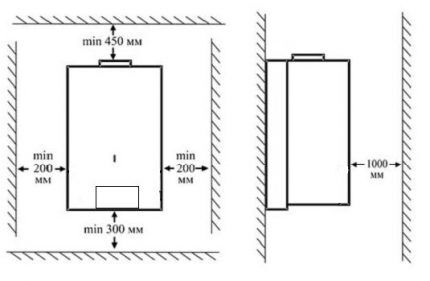
Only casement windows are suitable for installation, and they must open outwards. This design feature will allow for quick ventilation in critical situations, for example, in the event of a gas leak. And in a number of situations they will reduce or neutralize the consequences of the explosion.
The following is supplied to the boiler room:
- water - to provide the heating system with coolant;
- sewerage, which is necessary to drain the coolant.
The room where the boiler will be installed later must be equipped ventilation systems and smoke removal.
Moreover, the pipe for removing combustion products must be higher than the roof level. In some cases, this rule may not be followed, but the feasibility of such a decision will have to be proven.
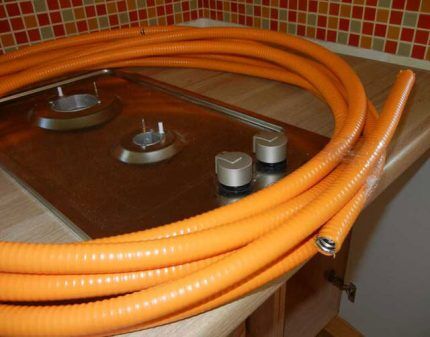
All the above requirements are also relevant for wooden houses. The only difference is that with a boiler power exceeding 60 kW, the minimum permitted volume of the room must be 27 m³. In this case, the installation must be made on a foundation made of non-combustible materials, which must also protect wooden walls from exposure to high temperatures.
You should know that there are quite a lot of requirements for the premises, its equipment and gas supply. Therefore, specialists should be involved in drafting the project. We also suggest that you familiarize yourself with the boiler room diagrams for a private home. More details - go to link.
Stage No. 2 - project approval
If at the creation stage the requirements and standards are determined that will make the operation of the heating system efficient and safe, then upon approval, the correctness of their choice is monitored.
This procedure is carried out by the responsible persons of the city gas companies (raigazov). Moreover, their task is not to identify shortcomings and reject the project. Therefore, most of the rules listed in the previous paragraph can be adjusted.
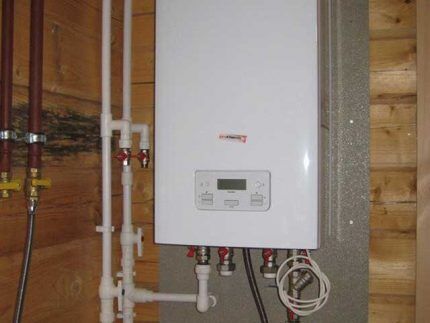
For example, if the area of the room is slightly less than the required 4 m² and there is no possibility of increasing it, then installing a boiler will be allowed. But to compensate for the shortcoming, the window glazing area will have to be made larger.Similar adjustments to norms are used in many other cases.
And the optimal solution will be the one that is provided at the stage of creating the project. Since this reduces the time for the boiler installation procedure, and also reduces costs. But to make the optimal decision, you need not only knowledge, but also experience, which only specialists have, which should be taken into account.
And yet, the described coordination feature is relevant only for cases when the house has already been put into operation.
If the housing is still at the construction stage, then the rules must be strictly followed. And, if there are no such possibilities, then the design standards state that a gas boiler room cannot be located in a private house, that is, an extension or a separate building should be used for these purposes.
Stage No. 3 - installation of a gas boiler
The peculiarity of this procedure is that it is necessary to strictly comply with the norms and requirements used to create the project. Since you can pay for their free interpretation later, at the verification stage.

The boiler can be installed by any person, that is, it does not have to be specialists from specialized organizations. But it should be remembered that this does not exempt you from compliance with technology standards, safety measures and all other requirements.
Stage No. 4 - performance check
Checking the functionality of the equipment and the correctness of its installation is a mandatory step before starting the equipment. The audit is designed to identify all violations and non-compliances with requirements in order to prevent possible negative consequences.
The necessary checks are carried out by Gorgaz employees, who, based on the results of the checks and the first start-up, draw up a report confirming that the installation requirements have been met.
And, in order to begin full operation of the heating system, you will need to follow the last rule - take the received permit to the city gas.
Tips for safe boiler operation
When using heating equipment, you should remember that regularly following just a few simple and universal rules will help you avoid trouble.
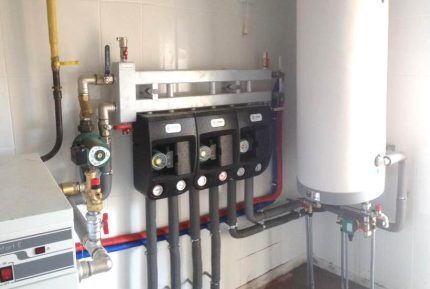
Before first launch You should make sure that there is no gas leak, which can be detected by a specific and unpleasant odor. After which you need to ventilate the room and check for draft. You should also ensure an unobstructed air supply to the boiler, which will reduce the likelihood of flame extinction.
Do not lean any objects against the heater. The storage of explosive and fire hazardous objects, substances, and liquids is prohibited in the boiler room. For example, firewood, gasoline containers, paper, etc. It is also prohibited to store spare liquefied gas cylinders in the boiler room.
The operation of the gas boiler must be monitored on a regular basis. When turning off the unit for a long period of time, for example, in the off-season, you should shut off the gas valve and water supply. It is also necessary to disconnect the unit from the power supply.
The boiler can only be cleaned when it is switched off and de-energized. Commissioning and other responsible work should be avoided by persons who do not have the appropriate knowledge, skills, or special tools.
Untrained people - children and the elderly - should not be allowed to operate the boiler. It is also imperative to remember that if a gas leak is detected, use of the boiler should be stopped immediately and the gas service notified of the malfunction.
Conclusions and useful videos on the topic
The first video provides an opportunity to familiarize yourself with the rules for installing wall-mounted boilers:
The following material provides information on the requirements for installing floor-standing boilers:
Numerous regulations set out hundreds of requirements that must be taken into account when installing a boiler in your home. But most of them are not dogmas. And, if it is not possible to strictly follow any rules, then they can be circumvented, and legally. But such issues must be dealt with by specialists in order to maintain the proper level of security.
What difficulties did you encounter when installing a gas boiler and how did you manage to overcome them? Please share your experience with other visitors to our site. Leave your comments and ask questions in the block below.



